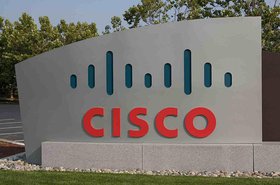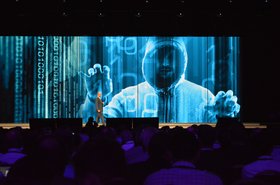2020 has been a year like no other. The world has seen unprecedented change and one of the ways this has manifested has been in the increased reliance on the Internet. The Covid-19 pandemic has left a lot of people wondering what they’d do without connectivity as they worked, played, communicated and shopped from home. So as we prepare to greet 2021, what learnings from 2020 can we carry into the new year? And what changes can we expect to see on the Internet?
Enterprise IT takes steps towards Internet literacy
The new-found critical reliance on Internet connectivity has meant that many enterprises navigating the risks of outages have learned the hard way that the Internet is a best effort network made up of thousands of distinct providers, operating on the honor system when it comes to routing integrity. This past year saw significant Internet disruptions, including several caused by BGP hijacking. Although the biggest outage this year (which took down a good chunk of global traffic) wasn’t caused by a BGP hijack, it led to service provider CenturyLink/Level 3 accidentally hijacking its customers’ routes, causing widespread disruption. In 2021, we’ll see Internet literacy become a hot commodity skill for IT practitioners so businesses can quickly identify and address issues in external networks that are beyond their direct control and reduce the risks of downtime.
SD-WAN gets domesticated for the home office
In 2021, as remote employees become a permanent fixture alongside (fewer) branch offices, more SD-WAN technology options will be rolled out for the home office. Security functionality has been a recent top priority for SD-WAN vendors, but we’ll see a shift in gears as vendors become increasingly pressured to provide solutions that are scalable enough to deploy in every employee’s home office environment. Rather than solely relying on VPNs to backhaul or split-tunnel traffic, enterprises will start to adopt centralized solutions to manage and enforce policies that route employee Internet traffic securely, with optimal performance.
Global app giants lean into the Internet
This year, major software companies like Facebook, AWS and Google continued to make significant investments in Internet infrastructure projects including subsea cables like 2Africa and Grace Hopper. In 2021 and beyond, as online connectivity remains crucial to power consumer services and employee solutions, hyperscalers will expand into the role of connectivity leaders as they seek to provide better access to their services, which are increasingly powering much of the world's global online ecosystem.
Smart offices call for smart monitoring
Demand for touchless features like voice-controlled activation and contactless payments skyrocketed in 2020. This type of functionality will only accelerate in the months to come, requiring extended visibility into the backend systems that power these new embedded applications and the API integrations that run them. IoT and “smart device” application performance becomes contingent on third-party API reachability and performance over the Internet and cloud provider networks. In 2021, end-to-end monitoring capabilities, from backend to frontend, will become increasingly critical as touchless solutions become crucial in our everyday lives.
A private Internet emerges for enterprises willing to pay
2020 has dramatically reaffirmed the role of the Internet as the lifeblood of many organizations’ operations. But the Internet is a complicated web of independent and interconnected service providers, any of which can impact the experience of users connecting to an application or site. As an alternative option and means of expanding monetization efforts, cloud providers and content delivery network (CDN) providers have been offering access to their private backbones with the promise of greater reliability and performance — for a fee. As uninterrupted digital experience continues to become critical to businesses, 2021 will see a growth in the number of companies that seek to avoid the vulnerabilities of the public Internet by paying for their own “private Internet.”
Historically distinct IT tribes learn to speak a common language
Cloud-based services are ubiquitous and with each new as-a-service solution, collaboration between traditionally-siloed IT teams will increase, as enterprises seek to maintain control of their digital experience. Migrating apps and services to the cloud means taking on a complex set of external, interdependent services — requiring a new level of actual human collaboration, be it network engineers, app developers or security experts, to operate and manage them. Given that IT teams must operate in a highly collaborative way across functions, 2021 will see increased use of solutions that can serve as a common operating language across different IT domains. Monitoring technologies with cross-stack observability across external services will become part of the critical IT toolset, helping enterprise teams, and even external providers, quickly get on the same page to optimise and troubleshoot faster.
With the new year just around the corner, it’s clear that the events of 2020 have had and will continue to have a huge impact on the way we use the Internet. Our newfound dependence on connectivity will remain to have a hugely significant influence on demands from consumers and businesses alike. From touchless technology and continued remote working to major investments in Internet infrastructure and new ways of monetising connectivity, it’s likely to be another pivotal year for the Internet.





